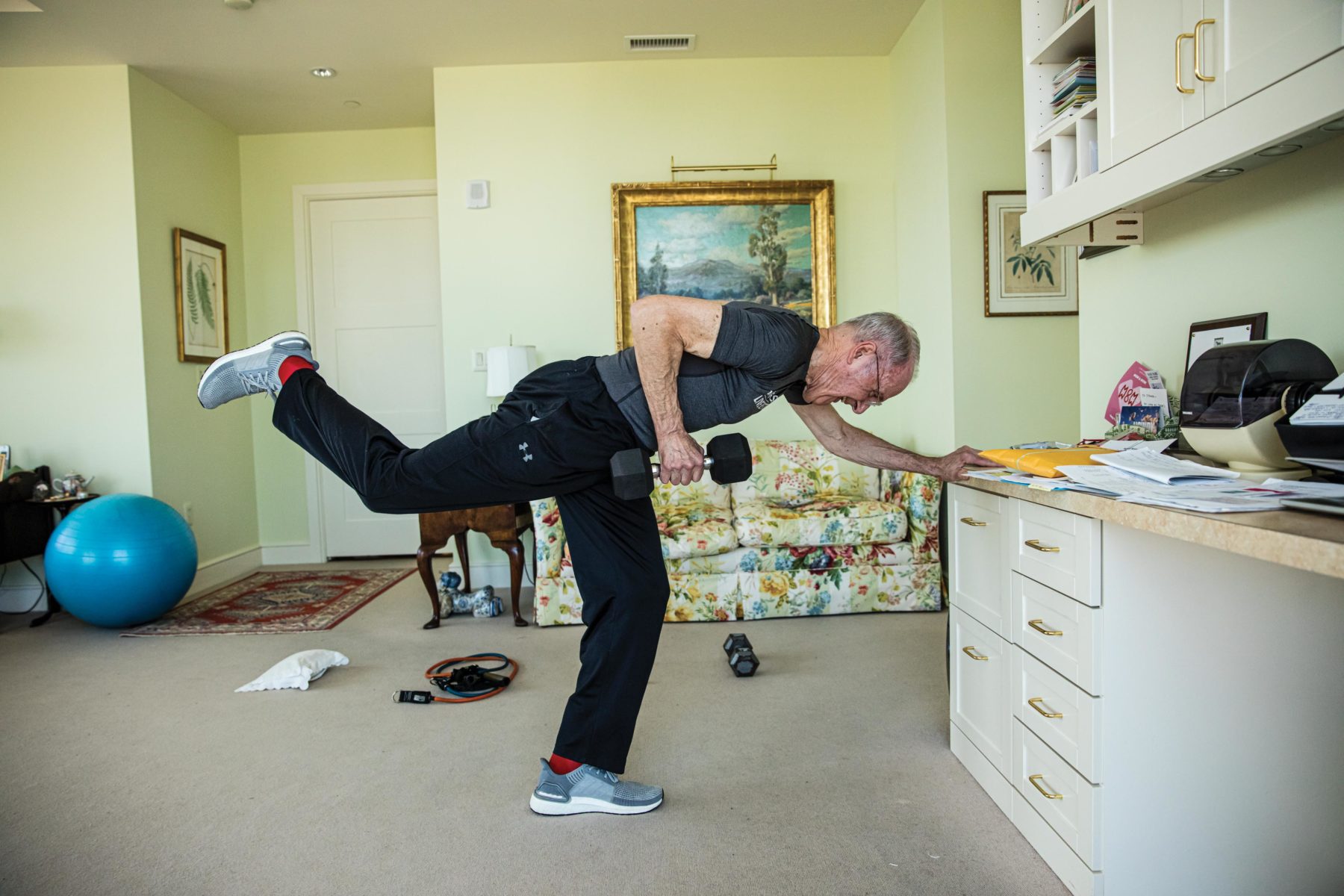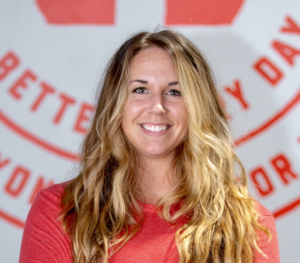Fit For The Ages

Growing up, my grandmother, whom we lovingly called Shana, would fly down from Chicago and spend the summers at our house. She loved torturing herself in the Texas heat. With her TV tray, foldable outdoor chair, cringe-y romantic novel and a gallon of sun tea, Shana spent most of her days chasing the sun spots that poked through the trees in our driveway — sitting, sipping and soaking up the Texas sun.
When it was time for family outings, however, I remember my parents always having to work around Shana’s immobility and chronic health problems. My Shana was a fierce woman who grew up navigating the aftermath of the Great Depression. A single mother to six girls, she didn’t necessarily have time to think about taking care of her health — she only had time to survive. As a result, she developed a cocktail of diet-related diseases and spent most of her late life avoiding excessive movement so as to not deepen her suffering of chronic joint pain and nerve and neurological problems.
I can’t promise that those summer experiences didn’t play a part in my passion for fitness and wellness today, but let’s just say I am constantly asking my parents how they’re moving and fueling their bodies on an annoyingly regular basis.
Since we put such a heavy emphasis on fitness and wellness, I often wonder what our generation will look like in our 60s, 70s, 80s and beyond. My hope is that as we continue to make our health a priority, our fitness sticks with us. After all, “if you don’t use it, you’ll lose it,” as was the case with my Shana.
So, what movements should we be incorporating into our fitness routines now that will keep us moving through the ages? Hint: you’re probably already doing them.
Squats
As active humans, we squat constantly — when we go to the bathroom, when we pick up our kids, when we sit for a meal, when we get out of bed. It’s a movement that is required for everyday life. Squats keep your legs, hips, core and glutes strong, so if you plan to be able to get yourself off the toilet when you’re 70, squat often.
Deadlifts
Similar to squats, we’re constantly deadlifting. Loading luggage into the trunk, moving your coffee table to vacuum under it, bending over to pick up anything and then standing back up again — deadlifts. Deadlifts help keep your back, glutes and core strong — things we need to remain active and mobile as we age.
Burpees
It’s an exercise that everybody loves to hate, but burpees are, arguably, the most functional movement on the map. It is falling to the ground and having enough coordination, core and upper-body strength to get back up again. As someone who has coached people well into their 70s, having this skill affords our older athletes a great amount of independence and confidence knowing that if they ever fell, they could get back up. And we love to see it.
Step-ups
Ever heard of stairs? Step-ups are a unilateral movement that aid in balance and coordination and require the recruitment of your glutes, quads and core to make happen. Walking up or down stairs, on and off a curb or even climbing a rocky pass while hiking — the step-up transfers directly into all of those real-life activities.
Walking, Running, Biking, Swimming, Jump Rope or Rowing
We walk every single day of our lives, and although we may not run, bike, swim, jump or row every day, these monostructural movements help build aerobic capacity — keeping our hearts healthy and our blood pumping. Each of these exercises are a total-body movement, amazing at maintaining coordination skills, engaging your core and keeping your joints strong and moving in varying ranges of motion.
High Planks and Hollow Holds
Okay, so maybe you don’t find yourself holding a high plank every day, but in my opinion, if you’re going to pick a couple of core movements to incorporate into your training for longevity — the high plank and hollow hold is it. If you haven’t picked up on it by now, building and maintaining a strong core (everything from your lats to your serratus to your abdominal muscles to your obliques to your pelvic floor) is essential to your quality of life. Not only does this section of muscles protect your spine, but it keeps you performing all of the aforementioned movements — ensuring your strength and mobility well into your later years.
So, what does it look like to put these movements into practice at the gym or in your at-home workout? Grab some weight, some bands or nothing but your body and try this on:
Buy in:
Run, bike, swim, jump or row for 10:00, then —
4 Rounds:
25 Air squats
20 Step-ups
15 Deadlifts
10 Burpees
*At the end of each round, hold a 1:00 plank.
Cash out:
Run, bike, swim, jump or row for 10:00
This workout can be modified to your level of experience by adding weight to the squats and deadlifts, using resistance bands or wearing a weighted vest through all of it.
About the Author
 Sadie Flynn is a CrossFit Level 2 trainer and former collegiate athlete with a penchant for power lifts. As a new mom, Sadie is deeply passionate about pregnant and postpartum fitness and wellness, and she works hard to help women take care of their bodies before, during and after birth. When she’s not coaching at CrossFit Renew or forcing her 90s alternative music beliefs upon you, you can find her somewhere outside with a beer, her husband, two dogs and their rambunctious toddler.
Sadie Flynn is a CrossFit Level 2 trainer and former collegiate athlete with a penchant for power lifts. As a new mom, Sadie is deeply passionate about pregnant and postpartum fitness and wellness, and she works hard to help women take care of their bodies before, during and after birth. When she’s not coaching at CrossFit Renew or forcing her 90s alternative music beliefs upon you, you can find her somewhere outside with a beer, her husband, two dogs and their rambunctious toddler.






